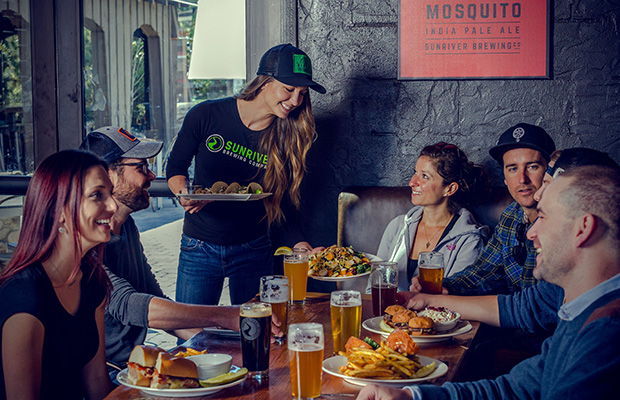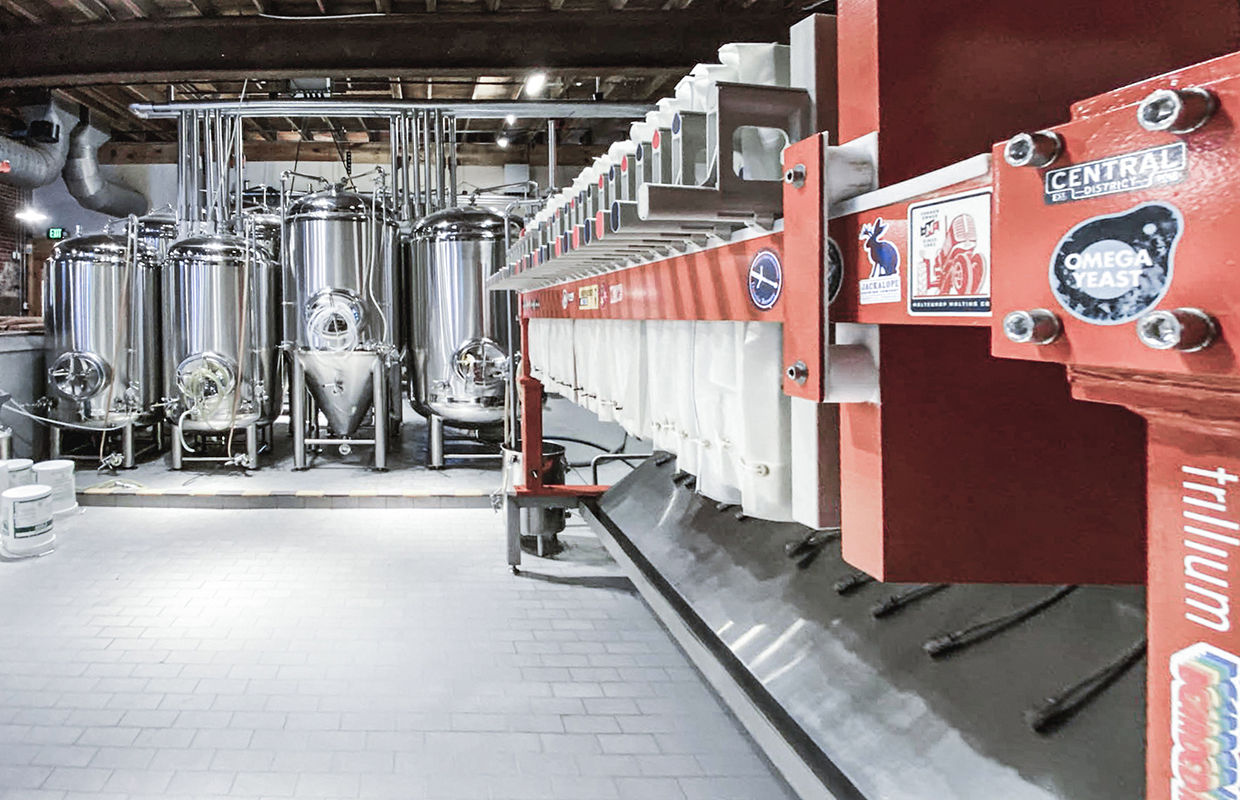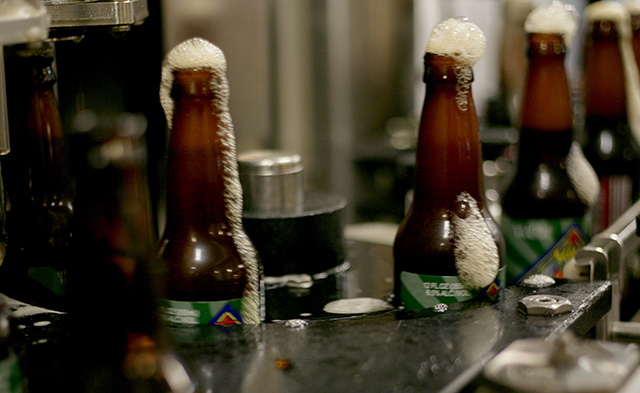
Opening a second location, or a third … maybe a fourth or fifth is a business strategy that many breweries across the nation have adopted. For some, it was in the framework of the business plan. Others saw the opportunity to maximize potential in sales.
Jake Rouse at Braxton sort of fell into the opportunity of having a second location fairly early in the Covington, Kentucky brewery’s life. A nearby brewery had to close its doors, and Braxton jumped at the opportunity to open what they dubbed ‘Braxton Labs’ in late 2017. The brewery recently opened a rooftop bar at its original facility while announcing it will be opening a barrelhouse just a few miles away from headquarters.
“Our entire model with respect to other facilities is that they have to be distinctly different but fit within the brand family,” said Rouse, who is CEO and co-founder of the nearly five-year-old company. “More importantly, they have to add operational efficiency to the overall company.”
Rouse pointed out that it was not the first intention to do a multiple-location model, but once the brewery picked a home base, the location dictated that any further expansion would need to be addressed elsewhere.
For Dust Bowl, a multiple taproom model was in the plan, with three currently open in California.
“Our business plan has always included deliberate growth via satellite locations,” said Brett Tate, the brewery’s owner. “As the traditional distribution channels have become more challenging, satellite taprooms have become an even more important aspect of our business plan. There are close to 1,000 craft breweries in California, so getting your brand and beer in front of consumers is critical.”
Short’s Brewing saw its second location happen out of necessity, said Scott Newman-Bale, a partner at Short’s. He said the brewpub in Bellaire, Michigan expanded into a production facility in Elk Rapids. Customers would stop at the production facility looking for beer.
“A small to-go operation led to a set up more conducive to sample and pick out options,” he said. “Now it is a full-blown summer pop up with a food truck.”
In a tourist town like Sunriver, Oregon — a short drive away from a craft beer hot spot like Bend, Oregon — the team at Sunriver Brewing has seen growth for its brewpub model. Ryan Duley, the brewery’s Director of Sales and Marketing, said the brewery’s management team had to scrap its original thought of having a production facility and brewpub under one roof. Instead, a second location materialized to be a production facility as the brewpub grew quite popular.
The facility feeds the brewpub for product, and Duley noted that many Bend-area consumers saw a need for Sunriver to have a Bend location. The success of that prompted a search to expand further out, both in distribution and with thoughts of a third pub.
After extensive research and looking everywhere from Boise, Idaho to Walla Walla, Washington, and even the greater Portland, Oregon area, Sunriver settled on its third spot to open about two hours away in Eugene, Oregon.
What Sunriver learned from opening the Bend facility directly translated into avoiding some pitfalls along the way. Early success has led the brewery to consider stretching its brewpub reach into markets farther away from its headquarters in the future.
“At first, we were severely understaffed and didn’t know we were getting into,” he admitted. Duley’s background was more restaurant-geared at first, so it took a little bit of time to figure out what Sunriver would need in terms of volume to get going smoothly.
“We’ve had a lot of operating procedures — a lot of change to our logistics and being more thoughtful with our internal logistics,” he said. “I thought we had a pretty nice sized SOP manual for opening up the pub and manuals for training and all that stuff, but we were able to tweak them because we found that this particular environment is not the same as every other restaurant we’ve ever been a part of.”
Even when the team opened the Bend and Eugene locations, each location has some intricacies.
“You can’t put a square peg in a round hole, so you have to be flexible in knowing that,” Duley said.
Knowing that your customer base is a little bit different can be a key. Even formulating what beers to serve at each of the locations can be somewhat dependent on the people that are being served.
Rouse pointed that out as he mentioned that it was a much different crowd at the new rooftop bar that Braxton added versus clientele that the original facility gets. He feels that something like the new barrelhouse facility will also have its own type of customer, so adapting the message without changing the story of what Braxton is can be tricky.
“That, I have to say, has probably been the hardest thing to scale,” he said, when talking about the brand experience.
“More importantly the communications, because the reality is that Braxton has been around for four and a half years. We’ve got a built-up audience of 150,000 people that expect to hear from Braxton [online]. Braxton Labs has been around for two years and that audience is probably a tenth of the size — may be a fifth. So it’s trying to understand when to cross-pollinate without diluting.
“That’s been a challenge and I think for us as we continue to scale our marketing team to understand. These are the boxes we need to check to make sure that everything is staying on track. We’re still learning that every day.”
Seeing better margins can be an attractive option in building a second location versus just adding a territory with on- or off-premise retail.
Using its Monterey location as the example, Dust Bowl has had distribution in that region for a couple of years.
“But we don’t have the bandwidth to have a sales rep solely dedicated to the region,” Tate said. “Since opening the Monterey taproom [in the early summer of 2019], volume from our existing accounts has grown and the number of calls from new retailers asking to carry our beer has been significant.
“This makes the job of our sales rep much easier and more efficient. This increase in demand is clearly from the consumer experience we’re providing at the new taproom. We served over 25,000 customers and poured over 45,000 beers in the first month — that’s a lot of marketing.”




Be the first to comment